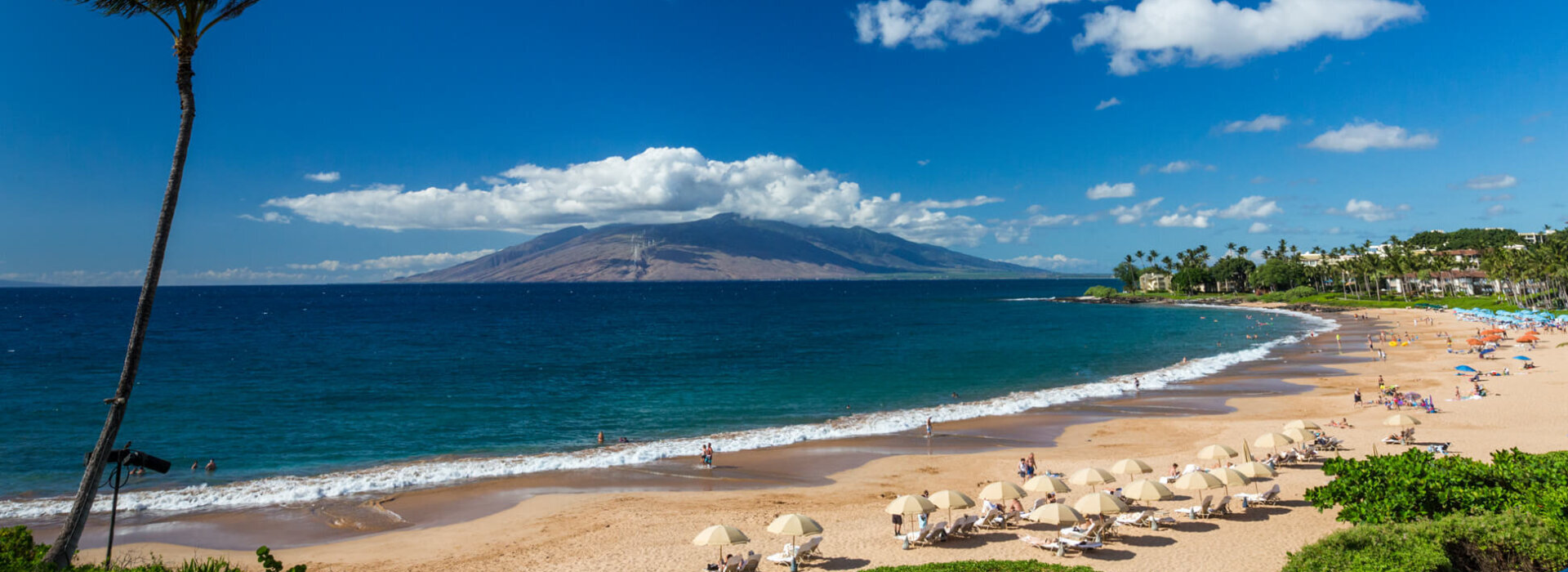Traveling to Maui, often called the “Valley Isle,” offers a unique experience on the second largest island in the Hawaiian chain. Covering an area of 735 square miles, it is one of Hawaii’s most popular vacation destinations. Maui is renowned for its beautiful beaches, vibrant nightlife, and diverse restaurant scene. With rugged, secluded landscapes and breathtaking views, it is the perfect location for your travel adventure.
The best times to travel to Maui, considering weather, crowds, demand, and prices, are April, May, August, September, and early October.
Attractions
Maui, like Oahu, is home to numerous popular attractions and boasts over 30 miles of stunning beaches, each offering something unique. Whether you’re interested in water activities or total relaxation, prefer white or black sand, you’re sure to find a beach that suits your vacation dreams along these world-famous shores.
The most popular beach on the island is Makena Beach, also known as “Big Beach,” in South Maui featuring beautiful white sand. In West Maui, Kaanapali Beach stretches for three miles and showcases white sand and crystal-clear waters; it was even named “America’s Best Beach” in 2003. North Maui is renowned for its beaches that provide excellent conditions for windsurfing. Baldwin Beach Park, located on the North Shore, offers protected swimming areas with calm waters at both the east and west ends, known as Baldwin Cove or “Baby Beach.” Two prime snorkeling locations are Molokini Crater and Honolua Bay.
On the East Coast, you’ll encounter the infamous Road to Hana, a winding drive that can take 1-2 days through lush tropical rainforests along narrow roads. Along the way, you can stop to swim in some of the most breathtaking waterfalls on earth, see rainbow eucalyptus trees, visit tropical gardens, explore lava tubes, and relax at a black sand beach, among other attractions.
Maui also offers plenty of hiking opportunities that provide stunning views of the island’s natural beauty. Hiking to the scenic summit of Haleakala, which stands at 10,023 feet, during sunrise or sunset is highly recommended; just be sure to make reservations for sunrise hikes. Iao Valley, located in Central Maui, promises a rewarding hike and is significant not only for its natural beauty but also for its historical importance.
To fully appreciate Maui’s remarkable landscape, consider taking a helicopter ride. This allows you to soar above waterfalls and iconic sites, providing a unique perspective on the island’s beauty.
Accommodations
Maui offers a diverse selection of hotels and resorts to ensure your comfort. Accommodations are available in several areas, including Kapalua, Kaanapali, Lahaina, Kihei, Makena, and Wailea, as well as a resort located in Hana on the island’s eastern side.
Airport
The main airport in Maui is Kahului Airport (OGG), which provides direct flights from the U.S. mainland. Alternatively, you can fly into Honolulu International Airport (HNL) on Oahu and take a short 30-minute flight to Maui.
Transportation
Consider reserving a rental car in advance to make the most of your time on the island. You can also explore Maui using shuttle services, tour buses, taxis, or public transportation.
Weather
The average temperature in Maui ranges from 75 to 85 degrees Fahrenheit. The summer months, from April to November, are generally warmer and drier, while the winter months, from December to March, tend to be slightly cooler. The western (leeward) side of the island is usually drier, while the eastern (windward) side receives more rainfall. Trade winds help to maintain a comfortable climate throughout the year.
It is important to acknowledge that West Maui experienced a tragic loss in 2023 due to wildfires, which destroyed lives, homes, cultural and historical sites, and businesses in Lahaina. Respectful and compassionate travel is highly encouraged.

